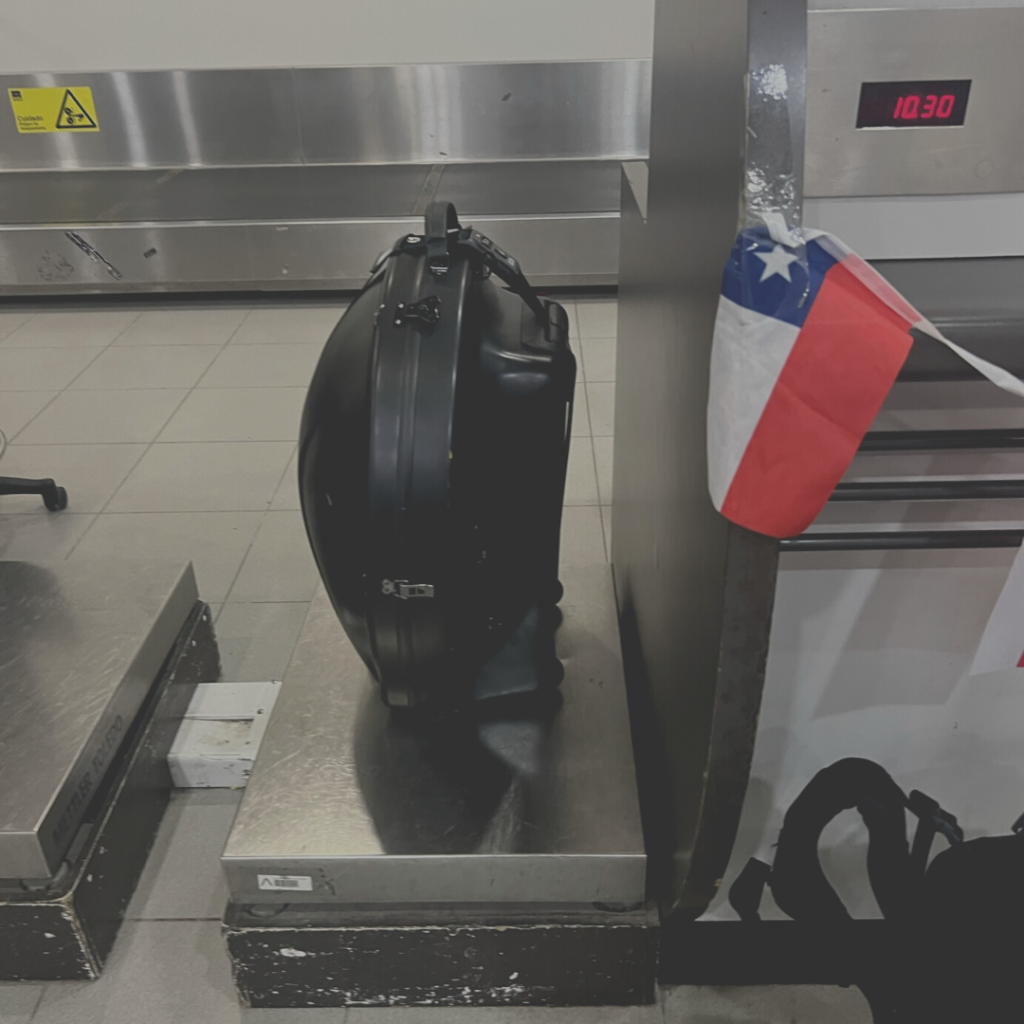Traveling with the Handpan
Which trip was particularly inspiring for you, and why?
Rafael: I spent eight years Traveling with the Handpan non-stop around the world, visiting over 40 countries. During this time, I played a lot on the street or in nature. However, proper concerts were also a part of it. Each country and culture has its own unique circumstances, a unique natural environment with its flora and fauna, and people with their own mentality. That’s why I believe that every one of these trips has inspired and shaped me and my music in its own way.
Why do traveling and handpan go hand in hand?
Rafael: Traveling with the Handpan is something very special. In my opinion, traveling and playing the handpan fit together perfectly. By playing, you give people a special moment, and you quickly meet people wherever you go. This often leads to conversations about music, and many friendships or acquaintances can form. The soul of the people is touched by the unique sounds of the handpan. It gives people something familiar, and for many, the handpan sounds like the noise of water. The overtones have a magical and meditative effect that touches and puts the player into a kind of trance. There is also a special connection to nature that seems to resonate with the instrument. People are still excited to hear this new instrument, and it’s easy to listen to it for hours, regardless of what language you speak or where you come from.
What travel preparations should I make for my handpan, and what should I not forget?
Rafael: When traveling, one must remember that the handpan is a sensitive instrument. Rust is a particular issue, so you should always be careful. Even stainless steel handpans are not 100% rust-proof. Another risk factor is the detuning of the instrument, which can become a serious problem during a trip. It’s also challenging to find someone who can quickly retune it. Therefore, especially when in nature, one should pay attention to the weather and climate and act accordingly.
If you want to travel with peace of mind, the instrument should be stored in the right hard case; otherwise, it could be damaged on the way. I advise against using soft cases for travel. Experience shows that something can always happen. It’s also crucial to explain to others how to play the instrument properly before they play it, such as not wearing rings, especially with nitrided instruments, as this can damage the instrument’s protective layer and make it prone to rust.
Should I take my handpan on a cruise?
Rafael: In principle, there’s nothing wrong with it, but saltwater is a particular challenge for the handpan. You should especially ensure that no moisture gets into the hard case. Additionally, on such a trip, it’s even more important to clean the instrument dry after playing. Finally, handpan players should not underestimate the salty sea air, even if it’s stainless steel.
Which place would you like to visit one day?
Rafael: On one hand, I’d like to visit Australia and New Zealand, and on the other, Alaska. I’d love to experience the nature there. I’d also like to visit the Philippines again, with their white beaches, many quiet places for relaxation and meditation, and fish in all possible colors. But there are such places all over the world; one just has to be open and look for them—everyone should find their own little paradise, a place where they can simply unwind. For me personally, it’s nature, regardless of the location. Culturally, India and Japan have impressed me greatly. The important thing is to be ready to discover something new.
Should I buy an extra handpan for traveling?
Rafael: Some people take smaller instruments with them when they travel, which aren’t as heavy. The downside is that the smaller the instrument, the higher the scale, and the fewer notes it can have. The upside is that you save on weight, which is certainly not a bad thing. Personally, I believe it’s worth carrying an extra kilo to have deeper tones and the option to take up to 20 notes with me. However, you don’t need a separate instrument for traveling; your regular one will suffice.

Flying with the Handpan
What do I need to consider when flying with my handpan, and can it be taken as carry-on luggage, or must it be checked in as regular baggage?
Rafael: First of all, you should be careful about which airline you choose. Some smaller airlines may not allow the instrument as carry-on luggage. It’s important to check this in advance because, depending on whether the instrument is stored above or below with other luggage, it may require a different hard case. My recommendation is to avoid semi-rigid hard cases. It should be a proper flying case made of fiberglass or carbon fiber. The instrument is very delicate and only one millimeter thick. Unfortunately, experience shows that the staff doesn’t take as much care with the luggage as they should, regardless of whether “fragile” or “handle with care” is marked on the boxes or cases.
The larger the airline and the plane, the easier it is to take the instrument into the cabin. When checking in, it’s a good idea to point out that there have never been any issues before and that it’s a very expensive instrument. This should help in allowing the instrument to be taken on board. Some planes even have special cabinets where the instrument can be stored. In this case, a regular hard case should suffice. Therefore, my recommendation is to always try to take the instrument into the cabin.
Can my handpan get out of tune when flying?
Rafael: If the instrument is in a semi-rigid hard case or a soft case, it can get out of tune if mishandled by the staff. This can also happen during shipping, so the instrument must be well protected. Once again, my recommendation is to use at least a hard case made of fiberglass or carbon fiber.
Is the TurtleCare Hardcase suitable for transport on an airplane?
Rafael: The TurtleCare Hardcase is suitable for transport as carry-on luggage. If the handpan with its hard case is too tall to be stowed in the cabin, the flight crew can assist, as they have large storage cabinets. It’s important to mention this early enough.
What should I consider if I want to take multiple handpans with me?
Rafael: Transporting two or even three instruments is more challenging. One option is to carry one as a backpack and carry the other two on each side. However, this makes it difficult to transport the rest of your luggage if you’re traveling alone. Another option is a trolley, where the instruments can be stacked on top of each other, which would help with the weight. With three instruments and three hard cases, that’s nearly 30 kilos. You really need to think carefully and plan your trip well. Personally, I sometimes fly with three Opsilon handpans, and it’s very exhausting, especially since you usually have to bring other luggage like clothing as well. Two instruments are already much more manageable.
Here’s a link to Part 2: First Exercises and Care and Part 1: Is the Beginning Really Hard?

The Flying Case from HandpanCare with handle and wheels. Ideal for traveling with the Handpan.




